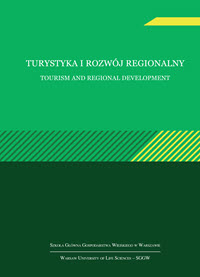Main Article Content
Article Details
Act (2020). Ustawa z dnia 19 czerwca 2020 r. o dopłatach do oprocentowania kredytów bankowych ud¬zielanych przedsiębiorcom dotkniętym skutkami COVID-19 oraz o uproszczonym postępowaniu o zatwierdzenie układu w związku z wystąpieniem COVID-19 (Dz.U. 2022 poz. 2141).
Andrzejaka M. (2017). Program gwarancyjny de minimis jako inicjatywa zwalczania barier dostępu do kapitału dla MSP. Zeszyty Naukowe PWSZ w Płocku. Nauki Ekonomiczne, 1 (25), p. 79-90.
Ayyagari, M., Beck, T., Demirguc-Kunt, A. (2007). Smali and Medium Enterprises Across the Globe. Smali Business Economics, 29 (4), p. 415-434. DOI: https://doi.org/10.1007/slll87-006-9002-5 (Crossref)
BIK (2022). Newsletter kredytowy BIK MIKROPRZEDSIĘBIORCY (2022). Biuro Informacji Kredytowej, 08.2020-08.2022.
Calza, A., Gartner, C., Sousa, J. (2003). Modelling the demand for loans to the private sector in the euro area. Applied Economics, 35 (1), p. 107-117. DOI: https://doi.org/10.1080/0003684021 0161837 (Crossref)
Erdogan, A.I. (2018). Factors affecting SME access to bank financing: An interview study with Turkish bankers. Small Enterprise Research, 25 (1), p. 23-35. DOI: https://doi.org/10.1080/13215906. 2018.1428911 (Crossref)
Harel, R., Kaufmann, D. (2016). Financing innovative SMEs of traditional sectors: The supply side. Euro¬Med Journal of Business, 11 (1), p. 84-100. DOI: https://doi.org/10.1108/EMJB-02-2015-0007 (Crossref)
Jasińska-Biliczak A., (2015). Problem samozatrudnienia — rola i miejsce mikroprzedsiębiorstw w gos¬podarce regionalnej. Barometr Regionalny. Analizy i Prognozy, 13 (4), p. 75-80. (Crossref)
NBP (2016). Dostępność finansowania przedsiębiorstw niefinansowych w Polsce. Warszawa: Narodowy Bank Polski.
North, D., Baldock, R., Ekanem, I. (2010). Is there a debt finance gap relating to Scottish SMEs? A demand-side perspective. Venture Capital, 12 (3), p. 173-192. DOI: https://doi.org/10.1080 /13691061003658670 (Crossref)
PARP (2021). Raport o stanie sektora małych i średnich przedsiębiorstw w Polsce. Warszawa: Polska Agencja Rozwoju Przedsiębiorczości.
Regulation (2020). Rozporządzenie Rady Ministrów z dnia 10 kwietnia 2020 r. w sprawie ustanowienia określonych ograniczeń, nakazów i zakazów w związku z wystąpieniem stanu epidemii (Dz.U. 2020 poz. 658).
Rossi, M., Lombardi, R., Siggia, D., Oliva, N. (2015). The impact of corporate characteristics on the financial decisions of companies: Evidence on funding decisions by Italian SMEs. Journal of Innovation and Entrepreneurship, 5 (1). DOI: https://doi.org/10.1186/sl3731-015-0031-7 (Crossref)
Statists (2022). SMEs in Europe - Statistics & Facts. Available online: https://www.statista.com/top- ics/8231/smes-in-europe/#topicOverview (access: 01.10.2022).
Steinerowska-Streb, I., Steiner, A. (2014). An Analysis of External Finance Availability on SMEs' Deci¬sion Making: A Case Study of the Emerging Market of Poland. Thunderbird International Busi¬ness Review, 56 (4), p. 373-386. DOI: https://doi.org/10.1002/tie.21627 (Crossref)
Stiglitz, J.E., Weiss, A. (1981). Credit rationing in markets with imperfect information, "The American Economic Review", Vol. 71(3).
Vasilescu, L. (2014). Accessing finance for innovative EU SMEs key drivers and challenges. Economic Review: Journal of Economics and Business, 12 (2), 35-47.
Wielechowski, M., Czech, K., Weremczuk, A., Wikarczyk, A., Zając, A. (2021). Development of the de minimis guarantee programme for SMEs in the transportation sector in Poland. Does COVID- 19 matter? Ekonomika i Organizacja Logistyki, 6 (3), p. 41-54. DOI: https://doi.org/10.22630/ EIOL.2021.6.3.21 (Crossref)
Wrońska-Bukalska, E., Wilkowska, J. (2017). Finansowanie kapitałami dłużnymi w opinii mikroprzedsiębiorców. Annales Universitatis Mariae Curie-Skłodowska. Sectio H -Oeconomia, 51 (5), p. 351-359 (Crossref)
Xia, X., Gan, L. (2020). SME financing with new credit guarantee contracts over the business cycle. International Review of Economics & Finance, 69, p. 515-538. DOI: https://doi.org/10.1016/ j.iref.2020.04.015 (Crossref)
Zając, A., Wielechowski, M., Czech, K. (2021). The impact of COVID-19 pandemic on credit financing of microenterprises and farmer business activity in Poland. Journal of Modern Science, 47 (2), p. 475-496. DOI: https://doi.org/10.13166/jms/143524 (Crossref)
Zatoń, W., Stawska, J., Czechowska, I.D., Lipiński, C. (2022). Potencjał działalności kredytowej sektora bankowego w obliczu pandemii COVID-19. Łódź: Wydawnictwo Uniwersytetu Łódzkiego.
Downloads
- Arkadiusz Weremczuk, Michał Wielechowski, Joanna Wrzesińska-Kowal, Developments and convergence of real housing prices in Poland during the COVID-19 pandemic: focus on voivodeship capitals , Turystyka i Rozwój Regionalny: Nr 16 (2021)
- Arkadiusz Weremczuk, Marta Suchan, The role of digital tools in holiday planning among Polish residents , Turystyka i Rozwój Regionalny: Nr 20 (2023)
- Arkadiusz Weremczuk, Pavel Kotyza, Michał Wielechowski, Development and potentialof renewable energy sources in Poland , Turystyka i Rozwój Regionalny: Nr 23 (2025)

Utwór dostępny jest na licencji Creative Commons Uznanie autorstwa – Użycie niekomercyjne 4.0 Międzynarodowe.





